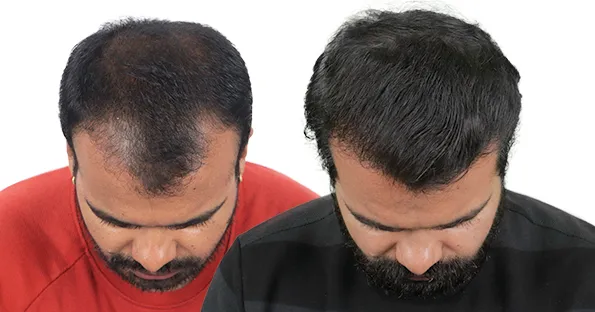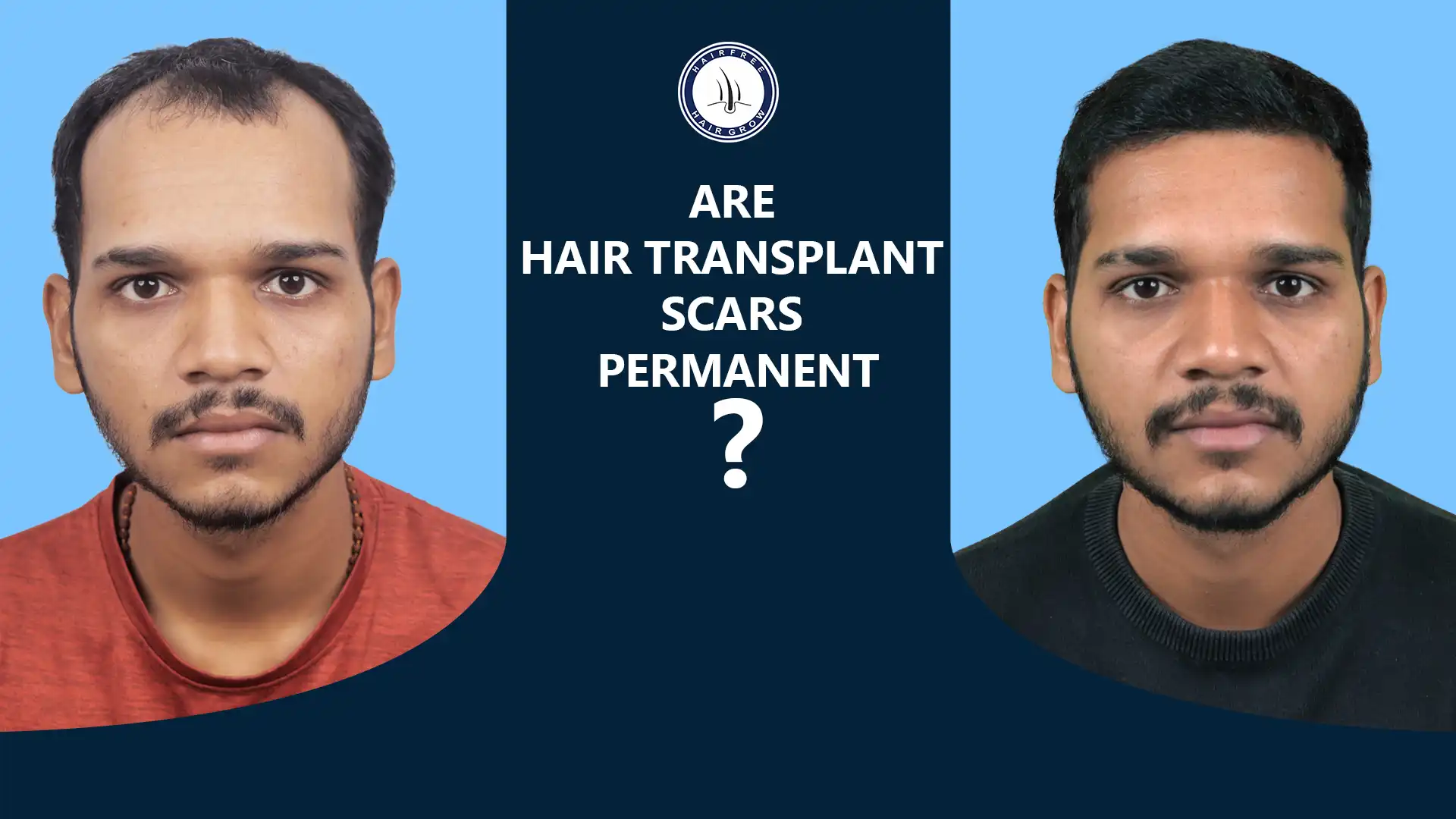
Are Hair Transplant Consultation Free? What to Expect and Why They Matter
Yes, many hair transplant clinics offer free consultations. These consultations allow you to discuss your hair loss concerns, evaluate your
Derma roller for hair growth or derma pen for hair growth
Microneedling with a Derma roller or derma pen can help to induce stem cells in the hair follicles that may lead to hair growth.
this minimally invasive procedure involves utilizing a device equipped with fine needles to create micro-injuries on the scalp’s surface. it has the potential to stimulate natural hair growth
Microneedling may enhance the absorption of products used to treat your hair loss by creating microchannels such as:

The treatment can be repeated once in 20 days for 8-10 sessions for optimal results.
For home care treatment patient can use two times a week with minoxidil (DERMA ROLLER )
Microneedling has been found since the 1990s, initially known for treating scars. But recently, it has been helping with hair loss too.
A derma roller or derma pen, containing multiple tiny needles, is gently rolled or pressed onto the scalp in a systematic pattern. These needles penetrate the skin’s surface, generating controlled micro-injuries that prompt the body’s natural healing response.

Microneedling involves tiny needles puncturing the skin, producing more collagen. This collagen boost is believed to be why it’s good for acne scars.
Microneedling’s effectiveness in hair loss treatment is that it prompts the body to stimulate collagen production and boost blood circulation in the scalp. The micro-injuries induced during the procedure activate fibroblasts, which are responsible for synthesizing collagen, elastin, and other structural proteins crucial for skin and hair health.
Microneedling might also encourage stem cells in the hair follicles to kick into action, potentially leading to hair growth.
Microneedling creates microchannels in the scalp, facilitating superior absorption of topical treatments and nutrients. This synergistic approach enables enhanced delivery of hair growth-promoting substances like minoxidil or platelet-rich plasma (PRP) directly to the hair follicles, amplifying their effectiveness.
Clinical studies and research trials have yielded promising evidence affirming microneedling’s efficacy in addressing various hair loss types, encompassing androgenetic alopecia and alopecia areata. Findings have showcased significant enhancements in hair density, thickness, and overall growth post a series of microneedling sessions.
Microneedling is valued for its versatility and synergy with other hair loss treatments. It can serve as a standalone therapy or be combined with topical medications, PRP injections, or low-level laser therapy to heighten overall efficacy and attain optimal outcomes.
Furthermore, microneedling is regarded as a safe and well-tolerated procedure, boasting minimal downtime and side effects. Most individuals experience mild redness and irritation Immediately following treatment, typically subsiding within hours to days. Serious complications are rare
Nowadays Micro-needling use as home care treatment is more popular
Microneedling or derma rolling emerges as a promising treatment modality for individuals grappling with hair loss. By stimulating collagen production, enhancing blood circulation, and augmenting the absorption of topical treatments, microneedling fosters natural hair growth and revitalizes the scalp. At our centre, we use microneedling with other treatments such as PRP therapy and Low Laser Light therapy to get the best result. If you are suffering from a hair loss problem and seeking treatment from the best-experienced doctors, feel free to contact us.

Yes, many hair transplant clinics offer free consultations. These consultations allow you to discuss your hair loss concerns, evaluate your

Generally, no, hair transplants are not covered by insurance in India, especially for cosmetic purposes like male pattern baldness. Hair

Yes, hair transplant scars are generally considered permanent, but their appearance can improve over time and be minimized with careful
Find Out in 3 Minutes, Your Hair Problem Solution.
Microneedling pens use motorized vertical needles for precise penetration, causing less skin trauma and faster healing. Dermarollers have fixed needles on a roller that enter the skin at an angle, which may cause more damage and less control. Pens are generally preferred in clinical settings for deeper, more targeted treatment and better hygiene.
Microneedling is clinically proven to stimulate hair growth by triggering collagen production and increasing blood flow to hair follicles. Studies show improved results when combined with topical treatments like minoxidil. Most users see noticeable hair regrowth after consistent sessions, making it a safe, minimally invasive method for androgenetic alopecia and thinning hair.
Yes, microneedling can be done at home using a dermaroller with 0.25mm–0.5mm needles. However, results are slower and less intense than professional treatments. It’s important to follow strict hygiene, avoid overuse, and disinfect the roller after each use to prevent infections. Professional guidance is recommended for deeper or more effective sessions.
Common side effects include redness, mild swelling, scalp sensitivity, and temporary irritation. Rarely, infection or pinpoint bleeding can occur if tools aren’t sterilized properly. These side effects usually resolve within a few hours to days. Consulting a dermatologist helps minimize risks and ensures microneedling is suitable for your scalp condition.
Yes, applying minoxidil after microneedling can enhance absorption and results. However, wait 24 hours after treatment to reduce irritation risk. Studies support combining both for better hair regrowth. Ensure your scalp is clean, and avoid using minoxidil immediately if you notice excessive redness or sensitivity after the microneedling session.
Microneedling at home is safe when done with proper tools (0.25–0.5mm dermarollers) and hygiene. Always disinfect the roller before and after use, and avoid overuse (limit to once or twice a week). While it can stimulate mild hair regrowth, results are slower and less dramatic than clinic-based microneedling treatments.
Noticeable hair regrowth typically appears after 4 to 6 microneedling sessions, with visible improvement around the 12-week mark. For optimal results, weekly or bi-weekly treatments over three to six months are recommended. Consistency is key, and combining microneedling with topical treatments like minoxidil can accelerate progress and boost hair density.
Yes, combining microneedling with PRP (Platelet-Rich Plasma) enhances hair regrowth significantly. PRP boosts the healing process and provides growth factors directly to hair follicles. Studies show this combo increases hair count, thickness, and follicle strength more effectively than either treatment alone. It’s especially beneficial for those with moderate hair thinning.
Yes, dermarollers can be safely used at home with 0.25mm–0.5mm needle length. Always clean the roller before and after use, apply gentle pressure, and roll in multiple directions. Avoid using on infected or inflamed scalps. Limit sessions to once or twice a week and follow up with soothing serums or oils.
Yes, microneedling pens are generally less painful than dermarollers. Pens insert needles vertically and precisely, causing minimal skin tearing. Dermarollers roll needles at an angle, which can cause more discomfort and irritation. Most users report that pen treatments are smoother, more tolerable, and better controlled compared to dermaroller sessions.